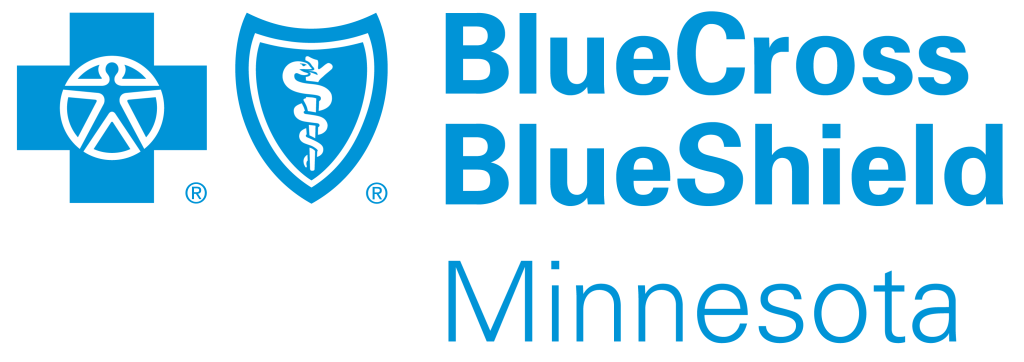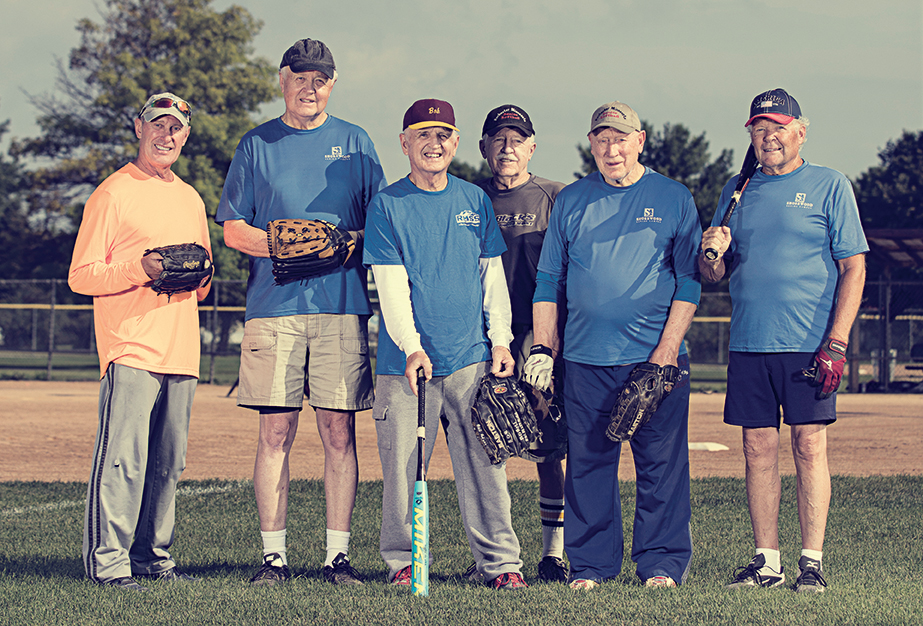On a steamy July morning at McQuillan Fields in Rochester, Bob Adams took to the mound to defend his team’s two-run lead in the bottom of the ninth inning.
Adams’ Shorewood club had just gone up by two after team Edward Jones rallied with eight runs in the eighth. Adams and catcher Larry “Cue Ball” Batterson, who have 164 years of age between them, shut that comeback down after three batters to leave the field with an 18-16 win.
“You never get old as long as you’re playing,” Adams says with a smile after the game. “When you stop playing, that’s when you get old. Out here, I’m not 81. I’m the pitcher on this team. My age has nothing to do with it. I’m going to give you my best game.”
Adams is one of roughly 120 participants in the Rochester Senior Softball League, founded in 2007 with the goal of providing fun, fitness and fellowship for older adults in Southwest Minnesota. Women need to be at least 40 to participate and men need to be at least 50, but many are 65 and older, with a handful still playing in their 80s. A common theme for most of them—good health and happy lives—which many attribute to the league.
That’s no surprise, says Dr. Heather Bergeson, a sports medicine physician at TRIA Orthopaedic Center. Group activities like softball, she says, can provide a wide range of benefits from staving off chronic conditions to maintaining a healthy weight to boosting social wellness and reducing stress.
“Exercise and connecting with others are probably the two things that will extend our lives the longest,” she says.

STAYING IN SHAPE
A deep hit to right field had Shorewood player Bob Hake, 68, darting for an athletic grab during the game against Edward Jones. Hake, who hadn’t played for more than 30 years before discovering the league, says plays don’t always turn out like that.
“I can’t do the things I remember doing before—everything is a thought process,” he says. “Like with fly balls, I used to just go catch them and now I’m wondering about it more. When you’re a kid you just did it on reflex and now those reflexes aren’t in the same shape that they used to be.”
The league, which hosts games on Mondays and Wednesdays from April through September, promotes safety by encouraging pregame stretching and warming up. It also operates under rules like playing two innings at a time to limit running on and off the field, using a phantom home base line to eliminate collisions, and allowing designated runners for batters. So the exercise is what you make it, but for most players it’s still a workout.
That workout has helped them to both physically and mentally get through a variety of issues, from arthritis to bad knees to recovering from more serious conditions like stroke and even cancer. Adams has experienced his own share of health issues, but always comes back to softball as a way to recover and stay fit.
“I’ve had a bad back through most of my life, but I just get up and get going and when I’m playing I feel better,” he says. “When you aren’t doing anything, that’s when you’re going downhill.”
Bergeson says physical activity is recommended for overcoming a variety of chronic conditions, though it’s important for any individual interested in taking up a new exercise to first consult with their doctor about their own individual limitations and risks. There’s an athlete in everyone, she says, but finding a sport that is both enjoyable and compatible with your ability is important.
If it’s softball, Bergeson says, the sport can provide great overall body exercise, strengthening bones and muscles while also improving heart health and more.
“Really every muscle is getting work because you have overhand throwing, running, working your core,” she says. “You’re going to be working a lot of different muscles.”
Before playing, she recommends a “dynamic warmup” that includes full-body stretching, light jogging or walking, practice throws, and practice swings of the bat. The most common softball injuries she sees are from a lack of preparation, such as a muscle pulled on a run to first base after a player’s first hit. Staying hydrated is also important, she says, as is wearing proper clothing and protective equipment.

MAKING CONNECTIONS
The league’s season is split into four 10-game sessions, with new teams drafted for each session. That prevents any one team from dominating (or struggling) and gives players an opportunity to meet new people. The league also hosts a potluck picnic at the end of each session.
“You can just see the camaraderie after every game,” says Ben Borgen, 74, who has been a part of the league since its start and, like Adams and others, has played softball or baseball in one way or another since childhood. “Tons of friendships and a few marriages have occurred because of being here.”
Lois Douglas, 81, one of five women in the league, says it offers her an opportunity to socialize, meet new people and reconnect with old friends from her community. While talking at the session two potluck, Douglas pointed out Dave Anderson, 69, who was her children’s science teacher in Byron, Minnesota. Anderson, who also coached baseball, says he feels grateful to be able to “extend his Little League career” as an adult.
“The reality is, when you’re retired, it’s nice to be able to go someplace where you can talk to people,” Anderson says. “It’s been a surprise and I’m sure the other guys feel the same way, to just have the opportunity to play.”



